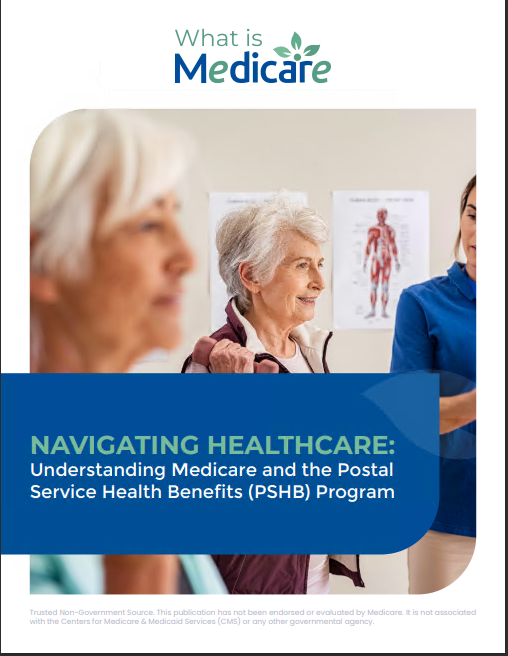Key Takeaways
-
Medicare Supplement plans, also known as Medigap, provide financial relief by covering gaps left by Original Medicare, such as copayments, coinsurance, and deductibles.
-
Choosing the right Medigap plan in 2025 requires understanding your healthcare needs, costs, and enrollment timelines to avoid penalties and delays.
What Are Medicare Supplement Plans?
If you’re navigating Medicare in 2025, you’ve likely encountered the term “Medicare Supplement plans,” often called Medigap. These plans are designed to help you manage out-of-pocket costs that Original Medicare doesn’t cover. While Original Medicare (Parts A and B) provides essential health coverage, it leaves gaps like deductibles, copayments, and coinsurance. Medigap steps in to fill these gaps, making healthcare more predictable and affordable.
How Do Medigap Plans Work?
Medigap policies are sold by private insurance companies and work alongside Original Medicare. Here’s how they function:
-
Secondary Coverage: After Original Medicare pays its share, your Medigap plan picks up the remaining costs based on the specific benefits of your plan.
-
Standardized Plans: Medigap plans are standardized across most states, which means Plan G, for example, offers the same benefits no matter where you purchase it. This makes comparing plans easier.
-
Individual Enrollment: Each Medigap plan only covers one person, so if you’re married, both you and your spouse must enroll separately.
-
No Prescription Drug Coverage: Medigap does not include drug coverage, so you’ll need a separate Part D plan for that.
Benefits of Medicare Supplement Plans in 2025
Medigap plans offer several advantages that can make a big difference in your healthcare journey this year:
1. Reduced Financial Stress
Out-of-pocket costs, such as the Part A deductible ($1,676 per benefit period) and the Part B deductible ($257 annually), can add up quickly. Medigap helps cover these expenses, protecting you from unexpected medical bills.
2. Flexibility in Provider Choice
With Medigap, you can visit any doctor or hospital nationwide that accepts Medicare, giving you unparalleled freedom compared to many other plans.
3. Predictable Healthcare Costs
By covering copayments and coinsurance, Medigap makes your healthcare expenses more predictable, helping you budget effectively.
Choosing the Right Medigap Plan
Selecting a Medigap plan is a personal decision that depends on your health needs and budget. Here are some tips to guide you:
1. Compare Plan Benefits
Medigap plans are categorized by letters (e.g., Plan A, Plan G). Each offers a different level of coverage. Plan G is popular for its comprehensive benefits, covering everything except the Part B deductible.
2. Understand Standardized Plans
Since the benefits are the same across companies, focus on factors like customer service and costs when choosing a provider.
3. Consider Your Healthcare Needs
-
Do you frequently visit doctors or specialists?
-
Are you managing chronic conditions?
-
What’s your tolerance for out-of-pocket expenses?
Answering these questions can help narrow down the best plan for you.
4. Check Enrollment Periods
Your Medigap Open Enrollment Period starts the month you turn 65 and are enrolled in Part B. This six-month window is crucial because you’re guaranteed coverage regardless of pre-existing conditions. After this period, insurers may charge higher premiums or deny coverage.
Medigap vs. Medicare Advantage: Understanding the Difference
It’s easy to confuse Medigap with Medicare Advantage (Part C), but they serve different purposes:
-
Medigap: Supplements Original Medicare, covering gaps in costs.
-
Medicare Advantage: Replaces Original Medicare with a bundled plan that often includes additional benefits like vision or dental.
Your choice depends on your preference for flexibility, provider networks, and cost-sharing structures.
Costs of Medicare Supplement Plans
While specific plan premiums vary, Medigap costs in 2025 generally include:
-
Monthly Premiums: Determined by factors like your age, location, and chosen plan.
-
Standardized Benefits: The costs for covered services remain consistent, simplifying budgeting.
Some states use different pricing methods, such as:
-
Community-Rated: Everyone pays the same premium regardless of age.
-
Issue-Age-Rated: Premiums are based on your age at purchase and do not increase as you age.
-
Attained-Age-Rated: Premiums increase as you get older.
Understanding these pricing structures can help you anticipate future costs.
Avoiding Pitfalls When Enrolling
Mistakes during the enrollment process can lead to higher costs or limited coverage options. Here are some common pitfalls and how to avoid them:
1. Missing Your Open Enrollment Period
Failing to enroll during your six-month Medigap Open Enrollment Period may result in higher premiums or denial of coverage.
2. Assuming Medigap Covers Everything
Medigap doesn’t cover long-term care, vision, dental, hearing aids, or private nursing. Plan accordingly for these expenses.
3. Overlooking Prescription Drug Coverage
Don’t forget to enroll in a Part D plan to cover your medications.
4. Not Reviewing Annual Changes
While Medigap plans don’t change benefits annually, related costs like Medicare premiums and deductibles might. Stay informed to avoid surprises.
Special Considerations for 2025
This year brings a few key updates to Medicare that may influence your Medigap decision:
-
Part A and Part B Costs: As mentioned earlier, deductibles and premiums have increased in 2025. A Medigap plan can shield you from these higher out-of-pocket costs.
-
Prescription Drug Coverage Cap: The new $2,000 cap on out-of-pocket drug costs under Part D doesn’t apply to Medigap. Ensure you have adequate drug coverage separately.
Tips for Maximizing Your Medigap Plan
To get the most out of your Medigap plan:
-
Use Providers That Accept Medicare: Ensure your healthcare providers participate in Medicare to avoid unexpected costs.
-
Review Your Plan Annually: Even though benefits don’t change, your healthcare needs might.
-
Coordinate with Part D: Ensure your drug plan complements your Medigap coverage.
Your Health, Your Choice
Medicare Supplement plans in 2025 offer a way to take control of your healthcare costs. By understanding how these plans work, comparing options, and enrolling on time, you can achieve greater peace of mind and financial security. Medigap is more than just a policy—it’s a tool to help you focus on what matters most: your health.










